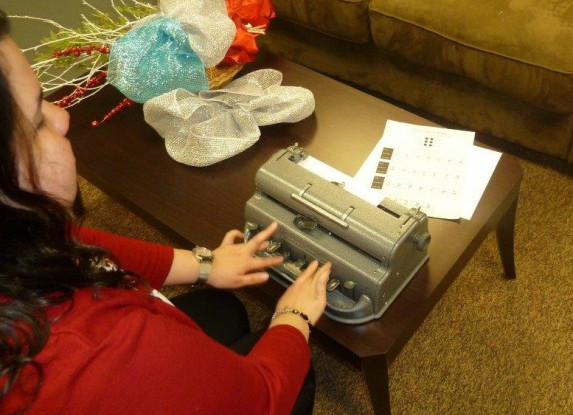
Should You Send Greeting Cards and Pictures to Someone Who is Blind or Visually Impaired?
Jan. 7, 2016
I recently received the following question from one of our loyal readers and Lighthouse colleagues!
What are your feelings about receiving greeting cards? Recently, I was sending holiday cards to my colleagues and didn’t want to exclude you, but also realized my standard photo collage card wasn’t something you could enjoy. What’s the general etiquette on card giving/photo sharing?
Thanks,
Lisa
First off, thank you Lisa for thinking of me as well as my fellow blind/visually impaired Lighthouse colleagues! Like anyone else, blind and visually impaired people enjoy receiving greeting cards and pictures. Just because we can’t see the words or images doesn’t mean we don’t enjoy receiving them! Simple suggestions and even creativity can help you come up with a greeting card or picture album all can enjoy.
Tactile cards
Some greeting cards nowadays have raised or embossed images. Often the paper has simple embossed designs, while other cards have tactile shapes made from materials like felt or glitter. I personally appreciate it when an acquaintance gives me one of these cards (although sometimes they do it without realizing it). The down side is that they might cost more than standard cards, and this can be a problem if you are on a tight budget. If you’re the creative, do it yourself type of person, then you can easily make a tactile greeting card. You can find thousands of styles and design ideas on the Internet.
Braille Greeting Cards
Several organizations that work with the blind sell Braille greeting cards. The Chicago Lighthouse’s Tools for Living Store sells a wide variety of greeting cards for different occasions (shop here). A Braille message is included in each card, and space is provided for you to write a personal message. Of course, if you know Braille or someone who does, you can write your message in Braille.
E-Cards
As the name suggests, these are digital greeting cards one can send via email. They often include picture animations and short audio clips. People can even personalize the cards with pictures and short audio recorded messages of their choice. I personally have a love-hate relation with these types of cards. Although I can easily click on the link to view the card, I often have no clue what’s in the animation or pictures. Unfortunately, animations aren’t always accessible with screen-reading software, and more often than not, the images aren’t described. I remember once getting a Christmas Hallmark e-card, and although I could hear “jingle bells” playing in the background, I had no idea what the images were.
Describing Pictures
Nowadays, sharing pictures is increasingly popular thanks to social media. Just like anyone else, blind and visually impaired people love receiving pictures of their friends and family, and of course any photos we might be in! No matter how you send the photos – through email, Facebook, Twitter, etc., it’s always a good idea for you to describe who and what is going on in the picture. Of course, if your blind or visually impaired friend or family member is in a particular photo, chances are he or she will remember when it was taken. By providing brief descriptions, we will be able to enjoy them as much as everyone else!
Regardless of what method you use, those of us who are blind or visually impaired will greatly appreciate the effort you put into sending us a card or photo. Even if the message in the card is handwritten, we will most likely find someone who can read it and describe the picture for us. Still, finding a card that is accessible can help us read and enjoy it independently. I hope that these tips and suggestions will help our readers get their blind and visually impaired loved ones greeting cards that they will be more likely to enjoy. Thanks Lisa for your holiday card, the Braille message made it extra special for me!






